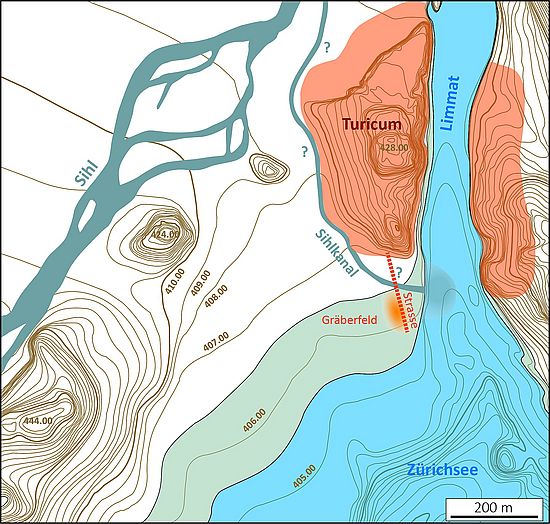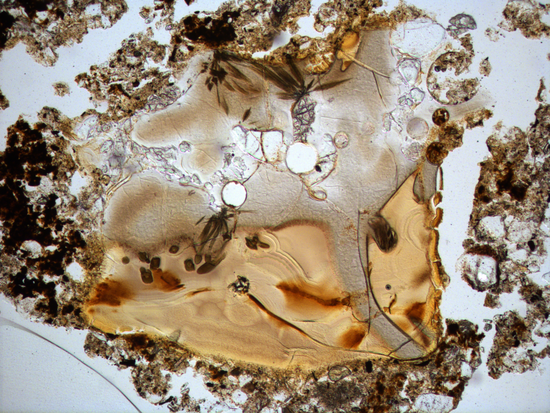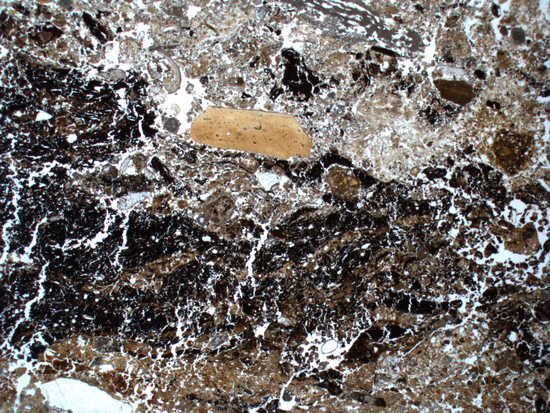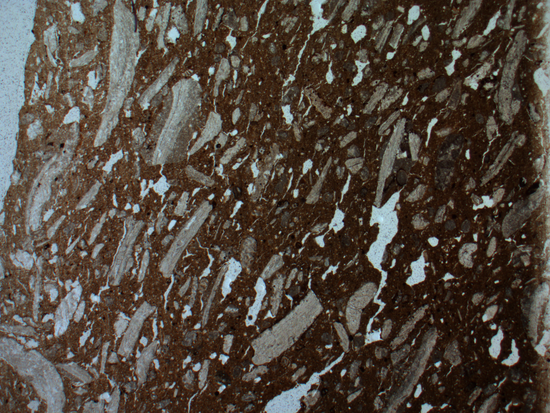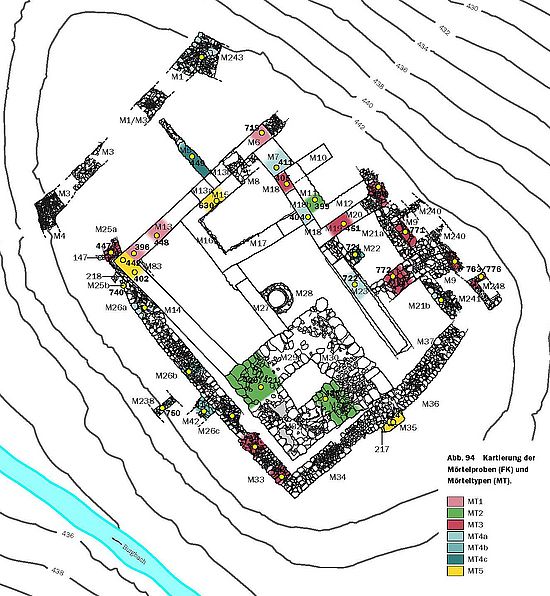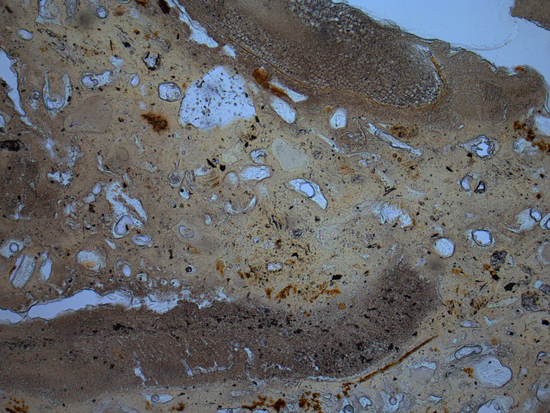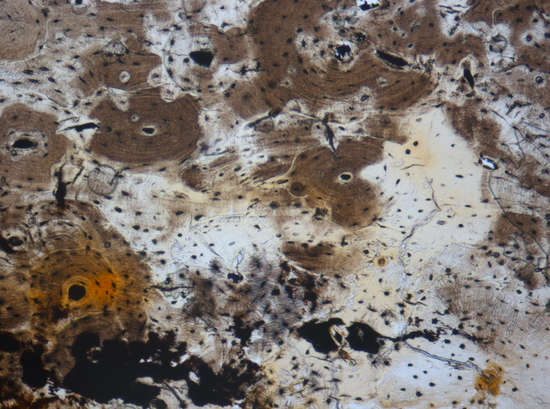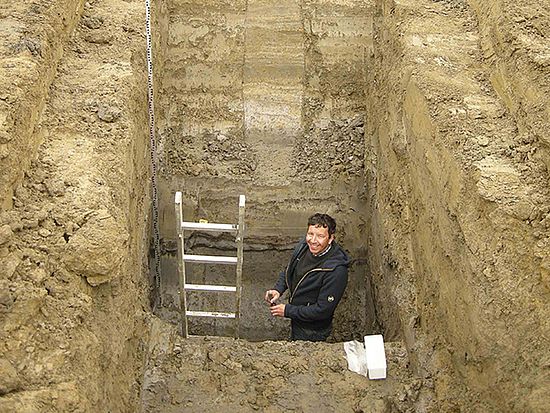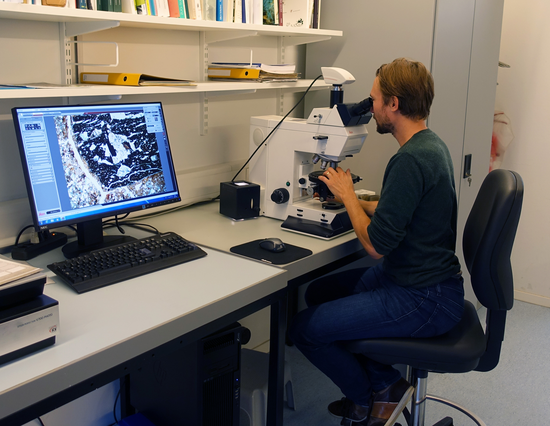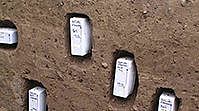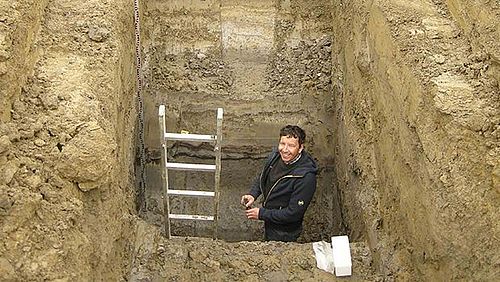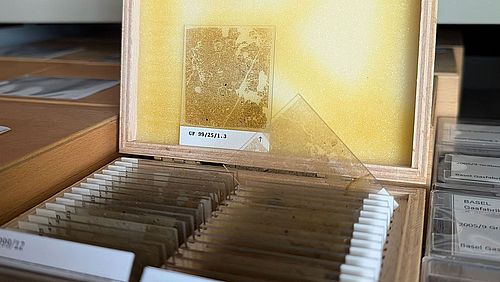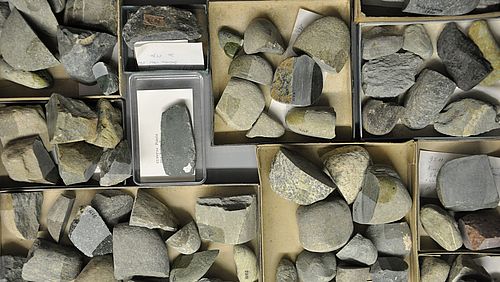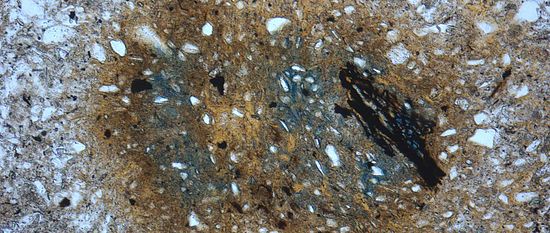
Geoarchaeology
Geoarchaeology working group PD Dr. Philippe Rentzel
Geoarchaeology is a natural science discipline that applies earth sciences methods to archaeological questions. It supports archaeological field research into geological and pedological problems and, in joint projects with archaeobiology, enables detailed reconstructions of landscape development and anthropogenic processes inside and outside settlements. The aim of geoarchaeological research is to make processes visible that are hidden behind (archaeological) layers and structures.
Introductory literature
- Ismail-Meyer K., Rentzel Ph. (2018) Geoarchaeology and micromorphology: In search of traces in archaeological layers. In: T. Burri/R. Stapfer, (ed.) Scientific methods in archaeology. Mitteilungen der Naturforschenden Gesellschaft in Bern, vol. 75 (Bern 2018) 178-197.
- Bieri, R. (2022) Man-made or natural? On the trail of soil layers. Reports! Monument preservation and archaeology Lucerne 15, 42-49.
- Stolz C., Miller C.E. (2022) Geoarchaeology (Berlin, Heidelberg 2022).
- Goldberg P., Macphail R., Carey C., Zhuang Y. (2022). Practical and Theoretical Geoarchaeology (Chichester, Wiley Blackwell 2022).
Teaching these skills is the aim of geoarchaeological training at the University of Basel and an integral part of the studies in Prehistoric and Natural History Archaeology (PNA). In a three-semester cycle, students are introduced to the geological and pedological basics as well as the methods of geoarchaeology:
- Geoarchaeology I (lecture): Teaches the geological-soil science basics using theory and case studies.
- Geoarchaeology II (block course): Practice-oriented introduction to micromorphology.
- Geoarchaeology III (block course): Documentation, analysis and evaluation of soil profiles and archaeological layer sequences using real examples.
- IPNA seminar and other (pro-)seminars
In the course of numerous field assignments and research projects, the co-workers of the geoarchaeology working group have specialized in various aspects and together cover a broad range of knowledge:
- Landscape history and Quaternary geology: reconstruction of soil development, lake level fluctuations, fluvial systems, etc. based on geological, pedological and sedimentological results
- Site Formation Processes: Reconstruction of layer formation processes, activities, taphonomic aspects and interpretation of archaeological structures (in wetland and mineral soil settlements)
- Petrographic investigations: Macroscopic and microscopic examinations of pottery sherds and stone artifacts
- Building materials: analysis of mortar, building stones, building bricks, clay constructions etc.
- Analysis of coprolites: microscopic examination of dung, stables, coprolites, latrine sediments and intestinal parasite eggs
- Histotaphonomy: microscopic examination of bones with regard to bioerosion, collagen content and heat exposure







Contact geoarchaeology
Staff
Associated co-workers
| Last name | First name | Function |
| Affonso | Maria-Thais | Guest employee |


Various work steps are necessary for geoarchaeological evaluations, which are carried out in mutual consultation with the archaeologists. It can take several months from fieldwork to micromorphological interpretation. A report based on macroscopic assessments (on the excavation or on samples) can usually be submitted promptly.
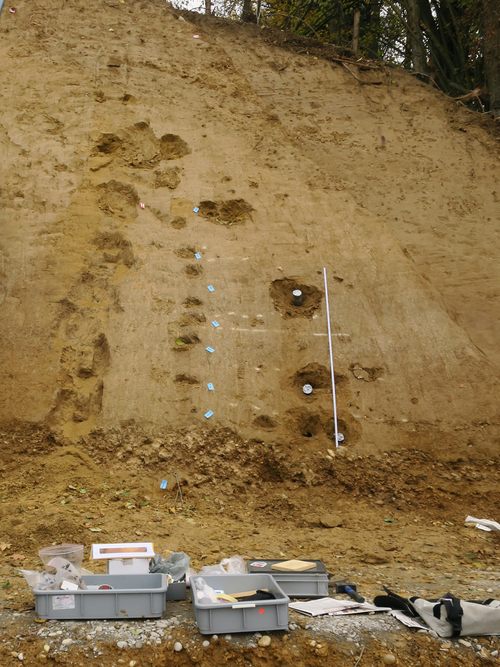
Fieldwork
- Macroscopic assessment of profiles and archaeological structures according to geological and pedological criteria
- Detailed layer approach and documentation
- Extraction of oriented block samples for micromorphological investigations
- Extraction of unconsolidated rock samples for geochemical and granulometric investigations (see below)
Guidelines for micromorphological sampling in the field
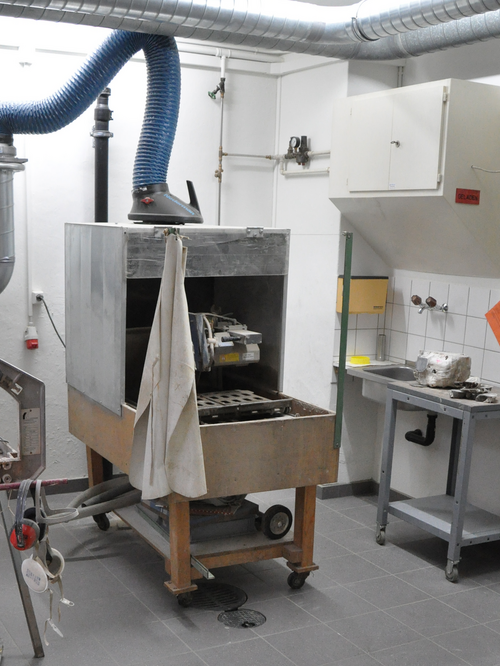
Workshop work
Our workshop mainly prepares block samples that are later used for micromorphological analyses. This includes the following work steps:
- Preparation, cleaning and photography
- Gentle drying
- Casting with epoxy resin
- Sawing with a diamond saw (production of so-called ground sections)
- Polishing of bevels
- Sawing of blocks for thin section production; the latter takes place in special laboratories
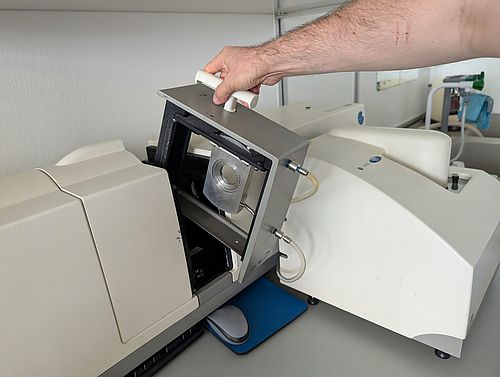
Laboratory analyses
The following analysis options are provided for sedimentological and geochemical analyses of loose sediments:
- Geochemistry (pH value; lime, phosphate and humus content; loss on ignition)
- Granulometry (grain size analysis) with sieving method (sand and gravel fraction) and Malvern-Mastersizer (clay and silt fraction)
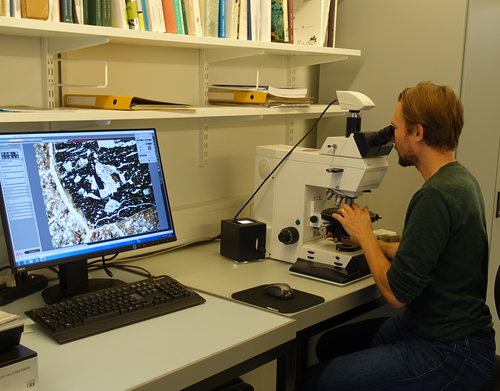
The following equipment is provided for micromorphological analysis using soil thin sections:
- Binoculars (Leica MZ12) with reflected and transmitted light
- Petrographic polarization microscopes (Leica DMRX, Leica DMRP, Leica DMEP)
- Fluorescence microscope (Laborlux 12 POL)
- Digital cameras for photographic images on the microscope (Leica DFC 420, Leica DFC 320)
- Macroscope (Leica Z16 APO) with multifocus system
Geoarchaeological collections
The IPNA has many scientific collections, most of which are also available to researchers at the university or outside by appointment.
Access requests for geoarchaeological collections
Quick Links
Social Media

